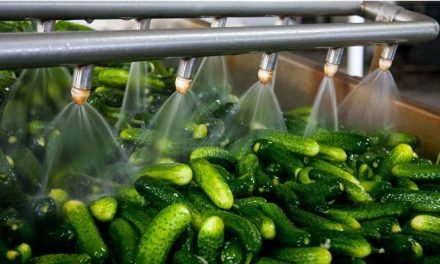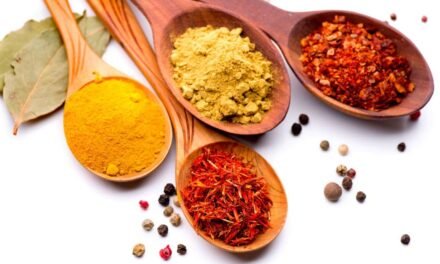India is the largest banana producer in the world, with around 25% of total production. Indian banana exports stand worth Rs 619 cr during 2020-21. India’s banana exports have been increasing sharply due to the adoption of farm practices according to global standards. India’s banana export growth is expected to continue this year, both in volume and value.
India is the largest banana producer in the world, with around 25% of total production. Indian banana exports stand worth Rs 619 cr during 2020-21. India accounts for 30% of the world’s banana production. This fruit could be exported easily because it was readily available throughout the year in India. It takes between 3 and 12 days to reach most banana export destinations. Indian banana exporters have had an excellent opportunity to increase their banana imports to West Asia through their close ties to these markets.
Indian Banana Exports During 2020-21
India’s banana export growth is expected to continue this year, both in volume and value. The Ministry of Commerce and Industry recently reported that 1.91 lakh tonnes of bananas worth Rs 619 crore had been exported so far.
The latest figure showed an increase in export of 1.34 lakh metric tonne banana (valued at Rs 413 crore) in 2018-19. India exported 1.95 million metric tonnes of bananas valued at Rs.660 crore in 2019-20.
The Ministry stated, in a statement, that India’s banana exports have been increasing sharply due to the adoption of farm practices according to global standards.
A major boost to banana exports of Geographical Indications (GI) certified agricultural produce, a consignment of fibre and mineral-rich ‘Jalgaon banana’ exported to Dubai, said the statement.
Top 5 Indian Banana Export Destinations
The top 5 trading partners of india are Iran (19.82 USD Million), United Arab Emirates (11.73 USD Million), Oman (6.23 USD Million), Saudi Arabia (3.7 USD Million), Iraq (2.84 USD Million). The total export value of Banana in these countries is 44.32 USD million. These top 5 countries account for over 76.98% of the total Banana export from India. The majority of bananas being exported by sea each day come from India. Although Indian bananas are being exported to the Maldives, Republic of Korea and other countries, their share of global exports is still small. In 2020, India’s leading banana importers were:
- IRAN: In 2020-21, India exported 11.79 per cent of its total bananas to Iran. Iranians received bananas from this country worth USD 29.82 million. White Globe was the Indian exporter with the highest number of bananas to Iran than any other company.
- UNITED ARAB EMIRATES (UAE): With exports of Indian bananas to the United Arab Emirates worth USD 11.73 million, it was the largest destination for Indian bananas. Exports accounted for 30% of total exports. The majority of India’s banana export companies exported bananas to the UAE, where banana exports comprised 5.24% of its exports.
- OMAN: The report shows that Qatar was the third largest exporter of Indian bananas during the reporting period. 2020-21 yielded a USD 6.23 million purchase of bananas from India. Besides the United Arab Emirates, the banana export company India did well in Oman, too.
- SAUDI ARABIA: Saudi Arabia was India’s number top export destination for bananas. It was also third among Middle East countries. With a 12.34% value sharing, the country bought Indian banana exports valued at USD 3.7 million. Mayi Industries was the banana supplier to Saudi Arabia that sold bananas most frequently.
- IRAQ: The report shows that Iraq was the fifth largest exporter of Indian bananas during the reporting period, yielding a USD 2.84 million purchase of bananas from India.
Top countries which imported the Banana from India in 2020-2021 (Apr-Nov)
| Country | Value (USD Millions) | Share % |
| Iran | 19.82 | 34.43 |
| United Arab Emirates | 11.73 | 20.38 |
| Oman | 6.23 | 10.82 |
| Saudi Arabia | 3.7 | 6.43 |
| Iraq | 2.84 | 4.93 |
| Qatar | 2.59 | 4.5 |
Export Prospects for Indian Bananas
- Due to ample supply growth, global banana exports, excluding plantain, will reach a record of 20 million tonnes by 2021. It would be an increase of 4.4 per cent compared to 2019.
- This rise is mainly due to strong supply growth in Ecuador and the Philippines, which are the top two exporters. However, shipments from other key suppliers were still affected by adverse weather conditions, including Costa Rica, Guatemala, and the Dominican Republic.
- The 2019 decline in exports from Latin America, the Caribbean, to 15.1 million tonnes, is primarily due to weather-induced production shortages in Costa Rica (and Guatemala), two of the top four exporters to the region. Plantations were affected by severe flooding and weather disruptions in the country’s early 2018. Low temperatures and lack of sunlight also contributed to lower yields.
- The third largest exporter of bananas in the region, Guatemala, will also see a 2 per cent drop due to cooler weather conditions. Guatemala will continue to be the third-largest exporter of bananas worldwide, with an approximate volume share at 13 per cent.
- The shipment volumes from Colombia, which is currently fourth in the world, are expected to drop by 5 per cent to about 1.8 million tonnes. This would, if it happens, be approximately 10% of global exports.
- The estimated exports from the Caribbean will reach 140.000 tonnes. The overall export performance of Caribbean countries was affected by severe weather-related disruptions in production in the Dominican Republic. This country accounts for around 90 per cent of all exports from the region.
Future Prospects for Banana Exports
Consumption markets are on the rise, especially in emerging markets. While core banana consumption is based on a staple, commoditised, and cheap product, the last twenty years have steadily developed a “more ethical” segment. It allows consumers to show an interest in a more sustainable banana and can help ensure the social and economic well-being of producers. This is evident in the emergence of many certifications: consumers want to know what the product is made of. Organic and Fairtrade bananas have experienced a substantial increase in demand, but they still only account for about 10% of the market.
Indian Banana Export Promotion Strategy
India must improve its banana yield; the average yield per hectare for commercial banana production using the Cavendish variety is between 40 to 50 tonnes. Large producers from countries like the Philippines, which have established industries, have averaged yields of 60 tonnes per hectare. Smaller producers in other countries produce only 30 tonnes per ha.
TR4 has had a limited impact on food security in the developing world. It is due to the fact that the disease spreads slowly and more widely. Cavendish variety is the most affected, as it supplies the largest amount of international market demand. However, but is also important for local consumption in developing countries. It is considered a serious threat because once the disease has been established, there are no ways to eradicate it. The disease is particularly vulnerable to smallholder farmers in developing countries, as they have difficulty accessing disease-free planting materials and cannot implement necessary phytosanitary measures.
Awareness about Public Standards
Public standards in Europe are only limited to defining minimum quality standards for banana marketing. The European Commission Implementing Regulation EU 1333/2011 combines 3 previous regulations in the banana industry (Regulation (EC), no.2257/94 and Regulation (EC), no.2898/95, respectively). It establishes marketing standards for bananas. These include the quality (minimum characteristics and classification into categories), size (minimum length, grade), quality tolerances, presentation, uniformity, packaging, presentation), labelling (product identification, type, origin, commercial specifications, branding). The Regulation also outlines the requirements for notification in the banana industry.
The European Parliament and Council Regulation (EC.396/2005) of 23 February 2005 on the maximum residue levels pesticides in food and feed of animal and plant origin also covers banana. Regulation (EC) No.834/2007 covers organic bananas and outlines all rules for production, processing, distribution as well as import, inspection, labelling, and labelling of organic products.
Banana World is Establishing Private Standards
There are still private standards in development; these specifications target a product or process and sometimes the marketing process. These standards can be divided into social issues (workers’ rights and safety), environmental issues (water protection, soil conservation, pesticide use or waste management), or other issues like food safety.
Rainforest Alliance
This certification is for environmental protection. One of the Rainforest Alliance trademarks can be used by companies that adhere to sustainable development standards. It allows them to stand out in the marketplace. This applies to farms that meet all criteria of the Sustainable Agriculture Network, logging operations that comply with the strict standards of Forest Stewardship Council (FSC), and tour companies that demonstrate their efforts in reducing their environmental footprint, supporting their workers, local culture, and the surrounding communities.
Specifications for Supermarkets
Tesco Nurture (formerly Tesco Nature’s Choice), is a code of good agricultural practices that aims to conserve biodiversity and promote farm conservation and environmental management. This benchmark is similar to the GLOBAL GAAP code and was created by Tesco (British chain) and the ADAS(Agricultural Development Advisory Service). Tesco Nurture’s requirements may exceed those of the law in certain cases. This benchmark is for all producers who supply Tesco with fresh fruits, vegetables and other horticultural products. This certification can be combined with GLOBAL GAP certification, BRC certification or IFS certification.
The Grenelle Environment Forum of Eco-labels France has been instrumental in developing carbon footprint labelling. This measures CO2 emissions and water footprint labelling for the agribusiness industry. Life cycle assessment (LCA), which was established in 1990, has attempted to include other factors, such as depletion, water, and soil pollution as well as damage of biodiversity, to ensure that there are no partial benchmarks. It is also known as environmental disclosure. There are not comprehensive labels that include all of these factors. Long-term trends are for increased requirements that incorporate sustainability factors as well as economic or social factors. Fairtrade label Fairtrade certification certifies the banana marketing process. It is one of the most well-known.
How to Tap Banana Export Opportunities
Bananas are fragile fruits and it is necessary to take multiple precautions to transport them. With a shelf life of 30 days, Indian exporters are able to tap the markets in West Asia, while for Europe, the product needs 45-day shelf life.
The Packaging for Banana Export
Packaging plays a important role in banana exports. Packaging materials include telescopic boxes, cardboard boxes, and fiber boxes. Shipping containers are used for exporting bananas. Each of the four sides will have a different thickness. The padding will be made of foam or foam sheets. A 10 mm hole will be drilled on each side of the box. Approximately 13 kilograms will be the final weight of the packed box. During domestic transport, bananas are delivered in full bunches in trucks and ripened at the destination, where they are cut into hands and loaded into plastic crates
Transportation and Storage
Unnecessary contact stresses the banana fruit as bananas are very sensitive to knocks, pressure and friction with other objects. Bananas are transported over long distances from tropical countries to world markets. This fruit is perishable and have a limited shelf life. Therefore, in order to avoid over ripening, the fruit is harvested before it is fully mature.
Immediately after harvesting, the cargo is transported to ports under careful handling. This product is refrigerated during shipment to keep it from ripening before it reaches its destination. The exporters use this method to prevent bananas from ripening naturally by producing ethylene.
Technology such as this allows storage and transportation of food for 3–4 weeks at 13°C (55°F). In order to maintain their quality, bananas are stored at 16 °C after arriving at their destination and dosed with a small concentration of ethylene. As soon as the fruit is distributed for final sale, it begins to ripen.
The fruits are placed in a brown paper bag overnight with a tomato or apple to speed up the ripening process. Due to bananas’ carbon dioxide production and ethylene absorbents, the fruit’s life is remarkably prolonged, even when it’s exposed to high temperatures. This effect can be obtained by using ethylene absorbents while packaging bananas in polyethylene bags. The banana will last up to three to four weeks without refrigeration after this treatment.
Documents Required for Banana Export
To export banana, various documents are needed. You need a packing list, invoice, mate receipt, certificate of origin, shipment related documents, Shipping Bill, Airway Bill, Bill of handing, Letter of Credit (L/C) Documents related to Payment, and Bill of Exchange.
It is also essential to have documents related to the quality of the goods. For instance, health certificate, Phytosanitary Certificate, GLOBALGAP Certification, and Organic Certification are compulsory. Foreign Exchange Regulations related documents, and RBI-related documents, which is an exporter’s assurance to RBI that the proceeds of goods will reach the destination within 180 days from the shipment date, are a must. That’s not all. Exporters also need Bank Realization Certification (BRC), which is a Foreign Exchange Bank’s suggestion after the realisation of payment against export by an importer.
Further Reading
https://agriexchange.apeda.gov.in/Weekly_eReport/Banana_Report.pdf
















